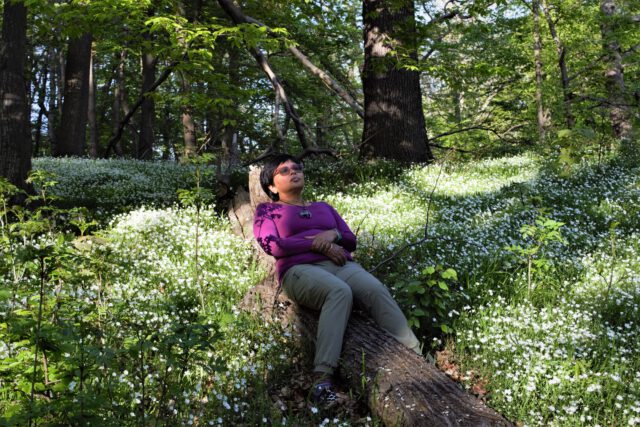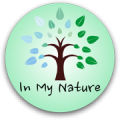I recently introduced the ‘sit spot’ practice to guests on a guided walk. Curious as to what this means, I explained the ancient practice of finding a place of intimate connection with nature – a place where you learn to sit still – alone, often and quietly.
As promised in my last blog, here are some suggestions about getting the greatest benefit from your sit spot. It is a regular habit which benefits my Forest Therapy guiding and mentoring.

I used to think I had a good connection with nature with all my hiking. However, I have come to learn and appreciate a further level of connection from a few simple practices at my sit spot. My sit spot has become my nesting niche, retreat and renewal centre.
Although keeping still is hard for most of us, we can gain a lot of benefits both physical and mental through this simple, but powerful practice.
So, how can YOU tap into the benefits of a sit spot practice?
- Go alone
Find time when your chores are done and you can slip away alone. Then quietly approach your sit spot and you’ll notice more. Having established a sit spot routine, you will soon find incredible things happening around you and with you: maybe an echidna will come out of the shrubs and feed a few meters next to you!
- Sit for at least 20 minutes – quietly
It’s a practice of being completely present, opening all the senses to become aware of all that is going on in the environment. It takes time for animals to feel safe again to come out and continue with their daily routines. The other part to this routine is about sitting, about stillness. Focus on improving your sit spot and your observation skills. By being a quiet, unobtrusive guest you will learn to make yourself welcome again, as an accepted member of the natural community.
- Go to your sit spot at different times, in all kinds of weather
To fully get to know your sit spot, go there at different times of day. Depending on the time of day you will observe different animals and different behavior patterns. Notice the different birds, flowers and animals through the seasons. Big umbrellas are good for rainy but also very sunny days!
- Be comfortable and learn to be still
Sit quietly and comfortably as this is the best way to allow the natural world to get to know you as well. After a while, birds and animals may approach you with curiosity. Allow yourself a few minutes to start noticing. Once you sit quietly long enough, the birds accept the fact that you are there and there for good. As they return to their daily tasks, a previously hidden dimension of your landscape opens up. Simply try listening firs to different bird songs until you can distinguish between them.
- Open all your senses
Use all your senses: your vision, hearing, touch, taste and smell. If you are intuitive, you can use that too.
- Start with one sense at a time. I usually practice mindful breathing, closing my eyes and just noticing the textures of the air, inviting the pleasure of calmness.
- Draw your attention to the closest sounds and then expand your hearing to the sounds furthest away. I love the sound of rain as it falls on my raincoat. There’s a rhythm in nature that is different throughout the seasons.
- Move your eyes to notice the smallest details – from the little daisy next to you, to the bird settling on the tree – to the full expanse of the sky and the clouds above you. What are YOU noticing?
- Touch the bark of trees and the leaves with your fingers. Feel the air on your skin. Pick up a handful of sand and feel the texture as it falls through your fingers. Go barefoot. I highly recommend this especially after rain.
- Smell the air around you, notice the smell of fresh grass, or eucalyptus after rain. Put your nose against the bark of a tree, pick up the vanilla scent of wattle tree flowers and notice the different textures of these aromas.
- With practice, you will be able to notice how the different senses are interwoven, heightened in different seasons and encouraging deeper connection to nature.
- Keep a journal, meditate or draw
Occasionally, I take my journal to my sit spot to sketch or write what I observe. Yesterday I observed what is best described as a ‘territorial war’ between birds at the pond. After heavy rain I may take my camera as the creek is beautiful when flowing. Let nature guide you to enjoy your sit spot in mindful ways.
- Have more than one sit spot
I have two: one is on the edge of a small creek with wooded area in the neighborhood. The other is our home garden where I can observe lots of birds and different wild flowers. Having two sit spots makes it easy to connect with nature, whatever the time, day or weather. Busyness, does not interfere!
I hope you can make the best of your sit spot practice this year. It is an experience that each person enjoys and benefits in different ways.
Enjoy your sit spot in a way that brings you joy, happiness and connection.

Recent Comments